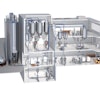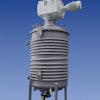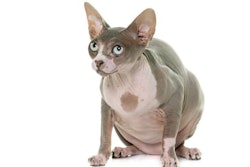
The mercury concentrations in 54 dog and 47 cat foods were measured by scientists. Some of the pet foods had mercury levels above those considered safe for other animals, especially those pet foods made from fish. Pet food manufacturers can avoid mercury-laden fish by paying attention to fish biology, study co-author Mae Sexauer Gustin, PhD, a professor at the University of Nevada – Reno, told Petfood Industry.
“Understanding the species of the fish used would be a good idea,” Gustin said.
Certain species of fish accumulate more mercury than other species. Carnivorous fish tend to have higher concentrations of mercury and other pollutants because the toxins accumulate up the food chain. The mercury in small fish is passed onto larger predatory fish, like swordfish, sharks and tuna. Where a fish lived also influences the meat's levels of mercury, other heavy metals and pollutants.
In Gustin’s experiment, pet foods made with salmon and trout tended to have the highest mercury concentrations.
Pet food formulations can avoid mercury-heavy fish by using plankton-eating fish, such as dog treats from Asian carp, or other fish that eat low on the food chain.
Mercury concentrations in dog and cat foods
A range of wet and dry dog and cat foods from different price points were compared in Gustin’s experiment. The foods contained from one to 604 nanograms per gram (ng/g) of mercury. Fourteen out of 101 pet food samples had mercury concentrations above 100 ng/g. All of those 14 listed fish as the primary ingredient on their labels.
Data on mercury toxicology in cats wasn’t available to Gustin’s team, so their results can’t specify if any of the tested products pose health risks to cats. However, 100 ng/g is considered the daily safe level of mercury in food eaten by river otters, while 70 ng/g per day is thought to be safe for small mammals. The researchers considered 100 ng/g to be a reasonable level of concern for dogs and cats.
Highest mercury concentrations in cat foods
Cat foods tended to have more mercury than dog food, and one fish-flavored cat food stood out with the highest concentration. A formulation made with tuna and prawns from Fussie Cat had 604 ng/g mercury in one batch and 373 ng/g in another. Other high pet food mercury levels were found in tuna nicoise flavor Merrick Purrfect Bistro (278 and 124 ng/g in different lots), ahi tuna and mackerel flavor Tiki Cat (335 ng/g), Hill’s Science Diet adult 1-6 years tuna dinner with chunks and gravy (282 ng/g) and ahi tuna flavor Tiki Cat (234 ng/g).
The study, “Mercury concentrations in wet and dry cat and dog food,” was published in the journal Animal Feed Science and Technology.

















